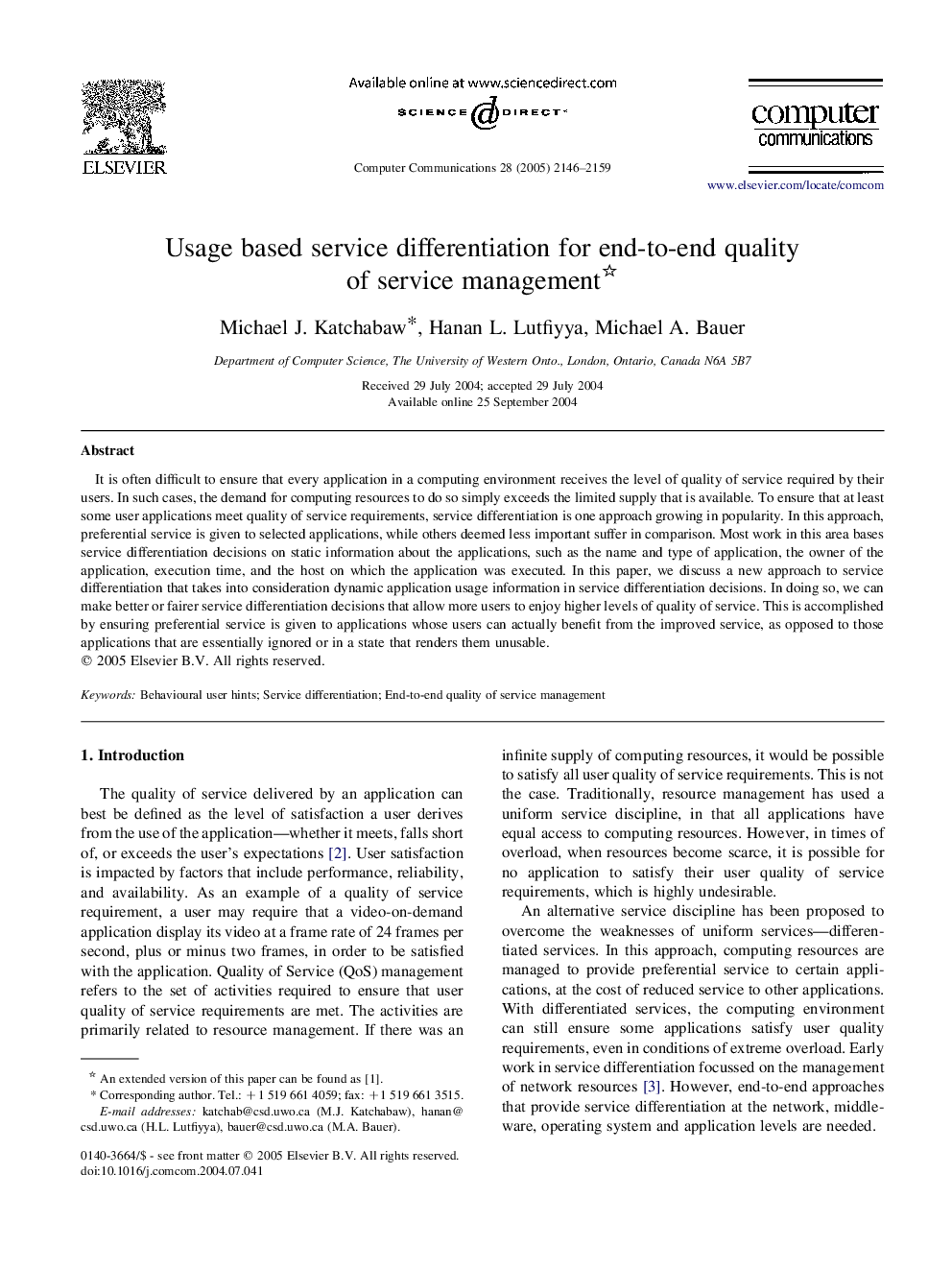| Article ID | Journal | Published Year | Pages | File Type |
|---|---|---|---|---|
| 449916 | Computer Communications | 2005 | 14 Pages |
It is often difficult to ensure that every application in a computing environment receives the level of quality of service required by their users. In such cases, the demand for computing resources to do so simply exceeds the limited supply that is available. To ensure that at least some user applications meet quality of service requirements, service differentiation is one approach growing in popularity. In this approach, preferential service is given to selected applications, while others deemed less important suffer in comparison. Most work in this area bases service differentiation decisions on static information about the applications, such as the name and type of application, the owner of the application, execution time, and the host on which the application was executed. In this paper, we discuss a new approach to service differentiation that takes into consideration dynamic application usage information in service differentiation decisions. In doing so, we can make better or fairer service differentiation decisions that allow more users to enjoy higher levels of quality of service. This is accomplished by ensuring preferential service is given to applications whose users can actually benefit from the improved service, as opposed to those applications that are essentially ignored or in a state that renders them unusable.
